
Auchterarder is a town north of the Ochil Hills in Perth and Kinross, Scotland, and home to the Gleneagles Hotel. The 1+1⁄2-mile-long (2.5-kilometre) High Street of Auchterarder gave the town its popular name of "The Lang Toun" or Long Town.
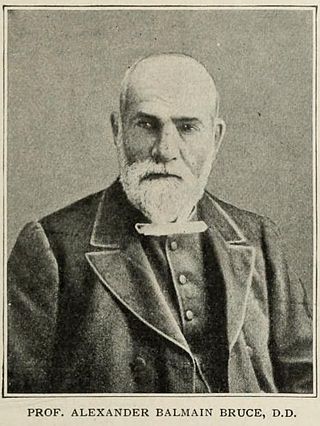
Alexander Balmain Bruce was a Scottish churchman and theologian. He was a minister of the Free Church of Scotland.
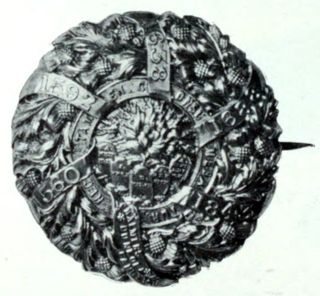
The Disruption of 1843, also known as the Great Disruption, was a schism in 1843 in which 450 evangelical ministers broke away from the Church of Scotland to form the Free Church of Scotland. The main conflict was over whether the Church of Scotland or the British Government had the power to control clerical positions and benefits. The Disruption came at the end of a bitter conflict within the Church of Scotland, and had major effects in the church and upon Scottish civic life.
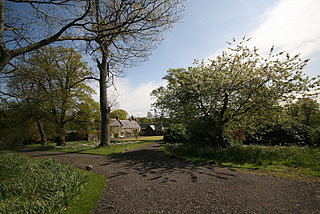
Cardross is a large village with a population of 2,194 (2011) in Scotland, on the north side of the Firth of Clyde, situated halfway between Dumbarton and Helensburgh. Cardross is in the historic geographical county of Dunbartonshire but the modern political local authority of Argyll and Bute.

David Welsh FRSE was a Scottish Presbyterian minister and academic. He was Moderator of the General Assembly of the Church of Scotland in 1842. In the Disruption of 1843 he was one of the leading figures in the establishment of the Free Church of Scotland.

The Kirk of the Canongate, or Canongate Kirk, serves the Parish of Canongate in Edinburgh's Old Town, in Scotland. It is a congregation of the Church of Scotland. The parish includes the Palace of Holyroodhouse and the Scottish Parliament. It is also the parish church of Edinburgh Castle, even though the castle is detached from the rest of the parish. The wedding of Zara Phillips, the Queen's granddaughter, and former England rugby captain Mike Tindall took place at the church on 30 July 2011. The late Queen Elizabeth II used to attend services in the church on some of her frequent visits to Edinburgh.

Duddingston Kirk is a Parish Church in the Church of Scotland, located adjacent to Holyrood Park in Duddingston Village, on the east side of the City of Edinburgh. Regular services are held at the kirk, conducted by the minister, Rev Dr James A. P. Jack.

Mauchline is a town and civil parish in East Ayrshire, Scotland. In the 2001 census Mauchline had a recorded population of 4,105. It is home to the National Burns Memorial.

Edinburgh: The New Town Church of Scotland serves Edinburgh's New Town, in Scotland. It is a congregation of the Church of Scotland, formed on 1 February 2024 by the union of St Andrew's & St George's West and Greenside Church.

Rhu is a village and historic parish on the east shore of the Gare Loch in Argyll and Bute, Scotland.

The Church Patronage (Scotland) Act 1711 or Patronage Act is an act of the Parliament of Great Britain. The long title of the act is An Act to restore the Patrons to their ancient Rights of presenting Ministers to the Churches vacant in that Part of Great Britain called Scotland. Its purpose was to allow the noble and other Patrons in Scotland to gain control over the Church of Scotland parish churches again, having lost that custom in the Glorious Revolution.

John Erskine (1721–1803), the Scottish theologian, was born near Dunfermline at Carnock on 2 June 1721. His father was the great Scottish jurist John Erskine of Carnock and his grandfather was Colonel John Erskine of Cardross who had been in William of Orange's army when it invaded England in the Glorious Revolution of 1688.

North and South Leith Parish Church, originally the Kirk of Our Lady, St Mary, is a congregation of the Church of Scotland. Prior to the union with the former North Leith Parish Church in 2024, the building was known as South Leith Parish Church.
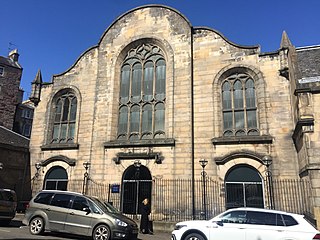
Lady Yester's Kirk was a parish church of the Church of Scotland and one of the burgh churches of Edinburgh. Founded in 1647, it served the south-eastern part of Edinburgh's Old Town until its union with Greyfriars Kirk in 1938.

Calderwood is a neighbourhood of the Scottish new town of East Kilbride, in South Lanarkshire. It lies on its north-east edge and is one of the largest areas of the town.

Scottish religion in the nineteenth century includes all forms of religious organisation and belief in Scotland in the 19th century. This period saw a reaction to the population growth and urbanisation of the Industrial Revolution that had undermined traditional parochial structures and religious loyalties. The established Church of Scotland reacted with a programme of church building from the 1820s. Beginning in 1834 the "Ten Years' Conflict" ended in a schism from the established Church of Scotland led by Dr Thomas Chalmers known as the Great Disruption of 1843. Roughly a third of the clergy, mainly from the North and Highlands, formed the separate Free Church of Scotland. The evangelical Free Church and other secessionist churches grew rapidly in the Highlands and Islands and urban centres. There were further schisms and divisions, particularly between those who attempted to maintain the principles of Calvinism and those that took a more personal and flexible view of salvation. However, there were also mergers that cumulated in the creation of a United Free Church in 1900 that incorporated most of the secessionist churches.
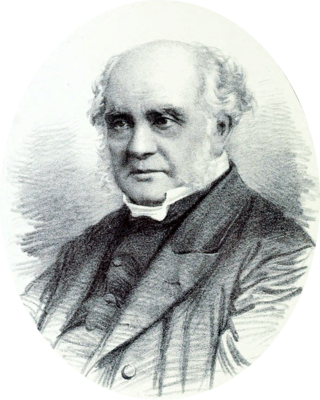
Sir Henry Wellwood-Moncreiff, 10th Baronet, originally Henry Moncrieff was a Scottish minister, considered one of the most influential figures in the Free Church of Scotland in his time. Henry Wellwood Moncreiff, tenth baronet, born in 1809, was ordained minister of the parish of East Kilbride, Lanarkshire, in 1836, and at the disruption, in 1843, he joined the Free Church. He was afterwards translated to St. Cuthbert's, Edinburgh. He married in 1838, Alexina-Mary, daughter of Edinburgh surgeon George Bell. He is one of the two principal clerks of the General Assembly of the Free Church of Scotland, Patrick Clason, being the other; and on the death, in 1861, of James Robertson, professor of divinity and church history in the university of Edinburgh, he was appointed his successor as secretary to her majesty's sole and only master printers in Scotland.
Rev Adam Mitchell Hunter FRSE DLitt (1871–1955) was a Scottish minister, mathematician, astronomer and author of church history.

St Andrew's Orthodox Church is an Orthodox church located in the Southside, Edinburgh, Scotland. Edinburgh's Orthodox community was founded in 1948 and has, since 2013, occupied the former Buccleuch Parish Church, which was founded as a chapel of ease of St Cuthbert's in 1756 and closed in 1969.

John King was an outlawed minister of the Covenant, chaplain at one time to Lord Cardross, but seized by Claverhouse among the insurgents after the affair at Drumclog. King was taken to Edinburgh along with another preacher named John Kid. They were each subjected to torture, condemned to death, and executed. Following his death King's head and limbs were displayed at the Netherbow Port on Edinburgh's Royal Mile beside James Guthrie's skull.



















